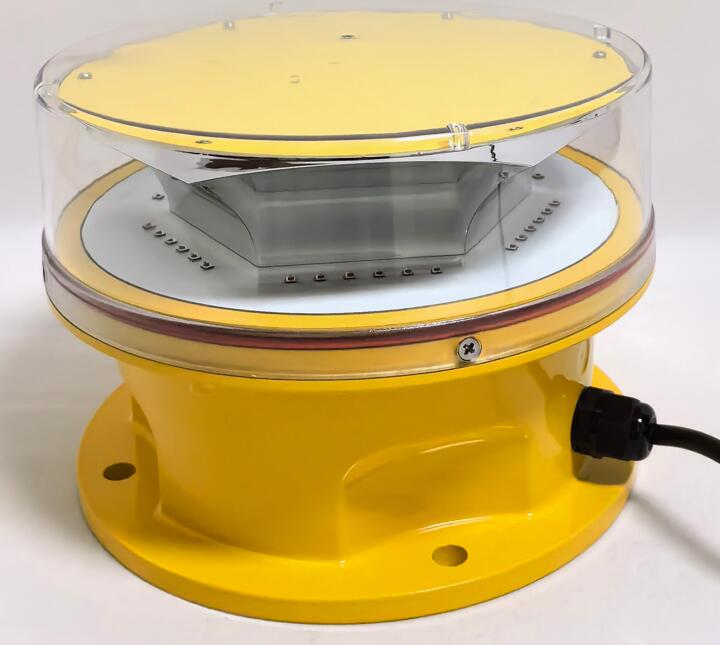Wind Turbine Obstruction Lighting: Powering Safety in Renewable Energy
As the world shifts toward renewable energy, wind turbines have become a common sight across landscapes. These towering structures, while essential for generating clean energy, pose a unique challenge to aviation safety. This is where wind turbine obstruction lighting comes into play. Designed to mark wind turbines and ensure they are visible to aircraft, these lighting systems are a critical component of aviation safety. In this article, we’ll explore the importance, features, and benefits of wind turbine obstruction lighting, and why it’s indispensable for the renewable energy sector.
What Is Wind Turbine Obstruction Lighting?
Wind turbine obstruction lighting refers to the use of high-intensity lights on wind turbines to alert pilots of their presence, especially during nighttime or low-visibility conditions. These lights are typically installed at the top and sometimes along the height of the turbine to ensure maximum visibility. By marking these tall structures, wind turbine obstruction lighting helps prevent collisions and ensures compliance with aviation safety regulations.
Key Features of Wind Turbine Obstruction Lighting
The wind turbine obstruction lighting system is engineered to deliver exceptional performance and reliability. Here are some of its standout features:
High Visibility: The bright, high-intensity lights ensure that wind turbines are visible from a distance, even in adverse weather conditions like fog, rain, or darkness.
Durability and Weather Resistance: Built to withstand harsh environments, these lights are resistant to UV exposure, corrosion, and extreme temperatures, making them ideal for outdoor use.

Compliance with Aviation Standards: Wind turbine obstruction lighting meets FAA, ICAO, and other international regulations, ensuring they are approved for use on wind turbines.
Energy Efficiency: Many modern lights use LED technology, which consumes less power while providing consistent illumination, reducing operational costs and environmental impact.
| Wind turbine obstruction lighting |
Low Maintenance: Designed for long-term use, these lights require minimal maintenance, saving time and resources.
Automatic Operation: Equipped with light sensors, these lights turn on at dusk and off at dawn, ensuring consistent performance without manual intervention.
Applications of Wind Turbine Obstruction Lighting
The wind turbine obstruction lighting system is widely used across the renewable energy sector to enhance aviation safety. Some common applications include:
Onshore Wind Farms: Wind turbines located on land are equipped with wind turbine obstruction lighting to ensure they are visible to low-flying aircraft, particularly in rural or remote areas.
Offshore Wind Farms: Turbines located offshore also require obstruction lighting to alert pilots and maritime traffic, ensuring safe navigation in these areas.
Hybrid Systems: Some wind farms use a combination of red and white lights to maximize visibility under various conditions, complying with both daytime and nighttime aviation requirements.
Benefits of Wind Turbine Obstruction Lighting
The wind turbine obstruction lighting system offers numerous advantages, making it a preferred choice for aviation safety in the renewable energy sector:
Enhanced Safety: The bright, high-intensity light ensures that wind turbines are visible to pilots, reducing the risk of collisions and enhancing overall aviation safety.
Regulatory Compliance: These lights meet FAA and international aviation standards, ensuring that wind farms comply with safety regulations.
Cost-Effectiveness: With their energy-efficient design and low maintenance requirements, wind turbine obstruction lighting reduces operational costs over time.
Reliability in All Conditions: Designed to perform reliably in all weather conditions, from extreme heat to freezing temperatures.
Long Lifespan: Built with durable materials and advanced technology, these lights have a long operational life, providing consistent performance for years.
Technological Advancements in Wind Turbine Obstruction Lighting
The wind turbine obstruction lighting system has evolved over the years, incorporating advancements in lighting technology. Modern lights often feature:
LED Technology: LEDs offer brighter illumination, lower energy consumption, and longer lifespans compared to traditional incandescent bulbs.
Smart Lighting Systems: Some lights are equipped with sensors that adjust brightness based on ambient light conditions, improving visibility while conserving energy.
Solar-Powered Options: For remote or off-grid locations, solar-powered wind turbine obstruction lighting provides a sustainable and reliable solution.
The Global Impact of Wind Turbine Obstruction Lighting
The wind turbine obstruction lighting system is a globally recognized solution for aviation safety in the renewable energy sector. Its reliability and compliance with international standards make it a trusted choice for marking wind turbines. From onshore wind farms to offshore installations, these lights ensure that turbines are visible to pilots, reducing the risk of accidents and enhancing safety.
The wind turbine obstruction lighting system is more than just a lighting device—it’s a critical tool for ensuring the safety of airspace around renewable energy installations. Its high performance, durability, and compliance with aviation standards make it a top choice for the wind energy industry. Whether you’re managing an onshore wind farm or an offshore installation, the wind turbine obstruction lighting system is an essential investment in aviation safety.
As the world continues to embrace renewable energy, the importance of reliable obstruction lighting cannot be overstated. By choosing the wind turbine obstruction lighting system, you’re not just meeting regulatory requirements—you’re contributing to a safer future for aviation and renewable energy. Illuminate the skies responsibly, knowing that the wind turbine obstruction lighting system is on your side.
